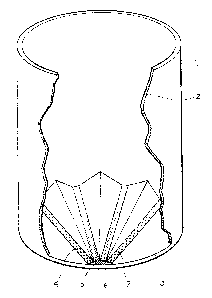Some of the information on this Web page has been provided by external sources. The Government of Canada is not responsible for the accuracy, reliability or currency of the information supplied by external sources. Users wishing to rely upon this information should consult directly with the source of the information. Content provided by external sources is not subject to official languages, privacy and accessibility requirements.
Any discrepancies in the text and image of the Claims and Abstract are due to differing posting times. Text of the Claims and Abstract are posted:
| (12) Patent: | (11) CA 2057276 |
|---|---|
| (54) English Title: | DEVICE FOR PREVENTING AIR-SUPPLY OBSTRUCTION |
| (54) French Title: | DISPOSITIF SERVANT A EMPECHER L'OBSTRUCTION DE L'ARRIVEE D'AIR |
| Status: | Term Expired - Post Grant Beyond Limit |
| (51) International Patent Classification (IPC): |
|
|---|---|
| (72) Inventors : |
|
| (73) Owners : |
|
| (71) Applicants : |
|
| (74) Agent: | NORTON ROSE FULBRIGHT CANADA LLP/S.E.N.C.R.L., S.R.L. |
| (74) Associate agent: | |
| (45) Issued: | 2002-07-02 |
| (22) Filed Date: | 1991-12-09 |
| (41) Open to Public Inspection: | 1992-08-27 |
| Examination requested: | 1998-07-08 |
| Availability of licence: | N/A |
| Dedicated to the Public: | N/A |
| (25) Language of filing: | English |
| Patent Cooperation Treaty (PCT): | No |
|---|
| (30) Application Priority Data: | ||||||
|---|---|---|---|---|---|---|
|
A silo (1) for cereals has channels (4-7) in its bottom (3), the channels (4-
7) being
provided on their upper sides (8-11) with passages for the through-flow of
air, in order
to facilitate emptying the silo (1) through an outlet opening (12). Said
passages have a
tendency to become clogged by dust present in the cereals. In order to prevent
this, the
end of each channel (4) located in the vicinity of the outlet opening (12) is
provided with
one or more openings (17) for the passage of said dust while at the same time
limiting the
air accompanying it to a minimum.
Note: Claims are shown in the official language in which they were submitted.
Note: Descriptions are shown in the official language in which they were submitted.

2024-08-01:As part of the Next Generation Patents (NGP) transition, the Canadian Patents Database (CPD) now contains a more detailed Event History, which replicates the Event Log of our new back-office solution.
Please note that "Inactive:" events refers to events no longer in use in our new back-office solution.
For a clearer understanding of the status of the application/patent presented on this page, the site Disclaimer , as well as the definitions for Patent , Event History , Maintenance Fee and Payment History should be consulted.
| Description | Date |
|---|---|
| Inactive: Expired (new Act pat) | 2011-12-09 |
| Letter Sent | 2010-12-09 |
| Inactive: Late MF processed | 2010-12-07 |
| Inactive: Office letter | 2007-03-26 |
| Inactive: Corrective payment - s.78.6 Act | 2007-01-31 |
| Inactive: IPC from MCD | 2006-03-11 |
| Inactive: Reversal of will be deemed expired status | 2006-02-16 |
| Inactive: Office letter | 2006-02-16 |
| Letter Sent | 2005-12-09 |
| Grant by Issuance | 2002-07-02 |
| Inactive: Cover page published | 2002-07-01 |
| Pre-grant | 2002-04-12 |
| Inactive: Final fee received | 2002-04-12 |
| Letter Sent | 2001-10-30 |
| Notice of Allowance is Issued | 2001-10-30 |
| Notice of Allowance is Issued | 2001-10-30 |
| Inactive: Approved for allowance (AFA) | 2001-10-17 |
| Amendment Received - Voluntary Amendment | 2001-08-27 |
| Inactive: S.30(2) Rules - Examiner requisition | 2001-02-26 |
| Amendment Received - Voluntary Amendment | 1999-06-30 |
| Inactive: Status info is complete as of Log entry date | 1998-07-27 |
| Letter Sent | 1998-07-27 |
| Inactive: Entity size changed | 1998-07-27 |
| Inactive: Application prosecuted on TS as of Log entry date | 1998-07-27 |
| All Requirements for Examination Determined Compliant | 1998-07-08 |
| Request for Examination Requirements Determined Compliant | 1998-07-08 |
| Application Published (Open to Public Inspection) | 1992-08-27 |
There is no abandonment history.
The last payment was received on
Note : If the full payment has not been received on or before the date indicated, a further fee may be required which may be one of the following
Please refer to the CIPO Patent Fees web page to see all current fee amounts.
Note: Records showing the ownership history in alphabetical order.
| Current Owners on Record |
|---|
| PM LUFT AB |
| Past Owners on Record |
|---|
| MATS HOLMQVIST |